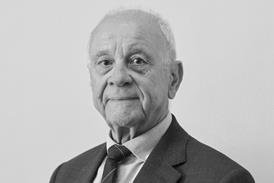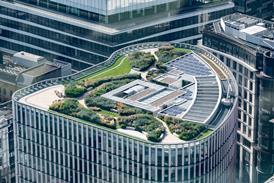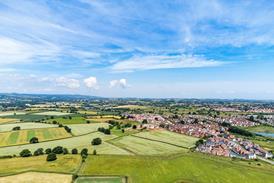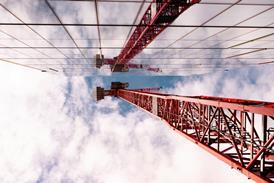A Building straw poll of 40 of the 129 MSPs held on Tuesday, weighted to reflect the balance of political power in the parliament, showed that more than three times as many MSPs were planning to approve the building than to reject it.
But many were still undecided, despite presentations on Tuesday from Miralles and the project team, which also includes Bovis and QS Davis Langdon & Everest. The presentations were held to explain the merits of the Holyrood project.
Some MSPs who were opposed to the project were concerned about the £14m in penalties that would be incurred if the project was cancelled; others resented the fact that further studies into the project’s future could not take place because delays would cost £500 000 a month.
The vote on the project’s future was called by Scottish parliament presiding officer Lord Steel after it was revealed last week that the project had run £20m over budget.
One Conservative MSP said: “It was dressed up as a £40m building and bumped on to the Scottish public as a sop to Donald Dewar’s ego, when it patently is not [a £40m building]. On that basis, I will probably vote against it.”
Another Conservative MSP said:
“I will be voting for it to go ahead. The present accommodation for MSPs’ staff is horrendous. Certainly, [the present accommodation] is not space they could be in for the next 15 years, let alone the next 100.
“I’m not concerned about the cost, as long as we get value for money. If people want to be terribly Presbyterian about it, they can vote against it, but I think you should do things properly.”
But an MSP from one of Scotland’s smaller parties said of the presentations and vote: “I went in very favourably, and came out against it.”
The poll found that the Liberal Democrats were generally in favour of proceeding with Miralles’ scheme, despite a push to scrap the building by two of the party’s members.
One Lib Dem said: “I think it should go ahead, but I’m not in favour of it costing more than we agreed at the outset.
I think it should go ahead, but I’m not in favour of it costing more than we agreed at the outset
Lib Dem MSP
“I think the costs are important. But more importantly, I think we should get the building right – it’s something for the future.”
The Scottish National Party had been expected to be uniformly against the project, but some broke ranks. One SNP MSP said: “My intention is to vote yes, but I’m still looking into the matter.”
Another said: “I think we should debate further. Personally, I don’t like the Holyrood site, quite aside from the design proposals drawn up. I want the best building we can get, so we have to spend the money needed. The costs of the building are a red herring.”
The office for one Scottish Labour MSP, who is also a member of Donald Dewar’s cabinet, said: “It won’t be a free vote for MSPs that are in the cabinet. They’ll be backing the government line.”
Another Labour source said: “It’s a free vote where you think of your career. Dewar approved the new building and he’s pushing Labour MSPs into voting for it to go ahead.”
One Labour MSP said the new building would incorporate disabled facilities that the present accommodation cannot provide. He said: “Miralles’ scheme is an exceptionally visionary design.”
Another Labour MSP said: “The new building will be a statement. If we are going to have a new parliament, we should have a new symbol to support it.”
But another SNP MSP said: “It does not suit the city of Edinburgh.
It is overpriced, is hidden in the wrong part of town and will compound an already nightmarish transport infrastructure problem. There are two other sites – the Mound and Calton Hill – which the public agree are in a position to house the parliament and are visible as landmarks throughout the city.”
But several who attended Miralles’ presentations came out strongly in favour of the scheme. One said: “I think it is an excellent proposal. It is a fitting building to house a parliament in the 21st century. The initial cost was £50m plus VAT and fees, which took it up to £107m. The latest cost is not considerably over that, and it has gone up because of things we wanted changed, like additional office accommodation and a bigger chamber.”






















